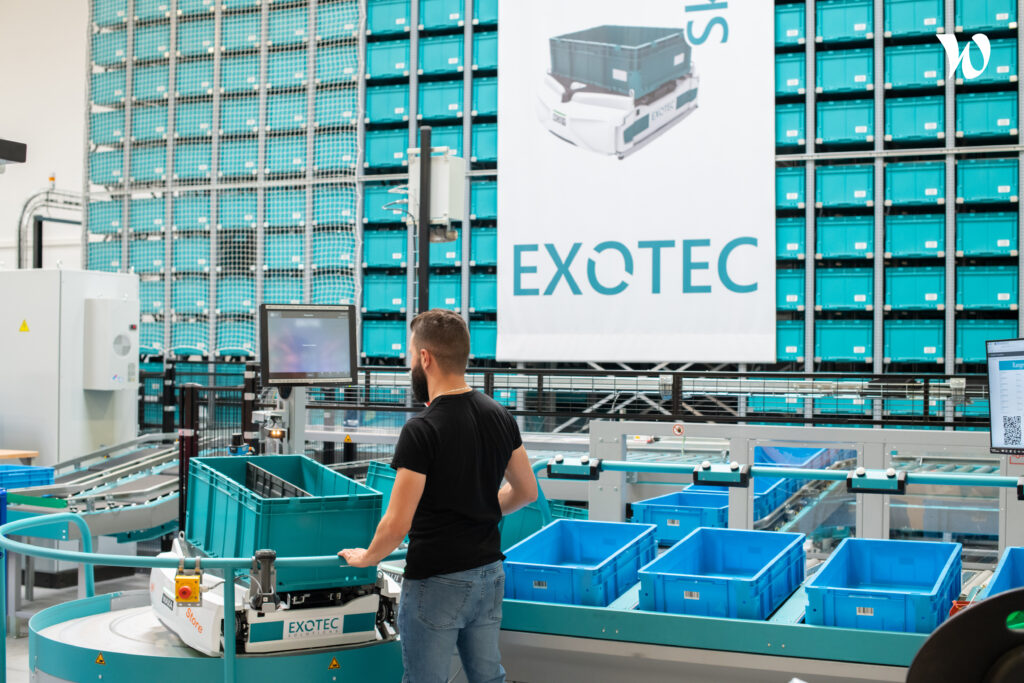Forever Proof Robotics
2nd December 2022

Robotics solutions can answer a lot of questions for logistics operators. Exotic’s Rémy Malchirand explains why.
Issues facing warehouse operators include supply chain volatility, increasing labour costs, difficulty finding workers and a lack of flexibility. Warehouse availability, scalability in the face of rising land costs and development limitations, as well as unprecedented economic challenges are also causing disruption as we head into 2023.
As such, retailers are unable to forecast and anticipate growth, and don’t know how to adapt their supply chain to rapidly evolving customer demand – particularly during seasonal peaks.
To adapt to these evolving challenges, a more flexible approach is needed. While automation isn’t a new concept in the UK, traditional automation is sized on anticipated volume of orders based on a long period of time. As a result, legacy technology and equipment is no longer enough to support the warehouse environment of today.
Whereas robotics deployment can significantly enhance the warehouse and logistics environment. A recent Gartner report, ‘Emerging technologies: smart robot adoption generates diverse business value’, highlighted that robots used to replenish retail stores demonstrate quantifiable results in 72% of use cases – the highest percentage among industries. The analyst firm forecast in the report that by 2030, 80% of humans will engage with robots daily, and for many, this may be in the workplace.
Automation in warehousing is no longer a smart addition but is an essential component for sustainable growth. That’s where systems such as Exotec’s retail and ecommerce order picking solution, Skypod, can bring real benefits to businesses – enabling productivity and storage density while remaining flexible and adaptable to customers’ needs.
Safe support for people
As well as needing to overcome external challenges, warehousing operators need to create an environment that enables human workers to operate safely, bolsters productivity and accuracy while maximising resources. For many businesses, human labour is dwindling because of the nature of warehouse work.
In fact, according to Gartner’s report, 66% of supply chain organisations say that labour availability constraints are the primary driver behind their investments in robotics. By implementing robotic solutions, the ‘mundane’ work is handled by robots to allow human workers to take on more customer-centric roles that take less of a physical toll. The result is often a significant reduction in staff turnover.
Working side by side with human operators, Skypod robots operate as a fleet, identifying and collecting totes from storage and delivering them to operators, helping them to prepare orders faster. Robots are constantly assigned new tasks programmed to prioritise the most urgent orders. ASTAR software synchronises the robots, which can carry up to 30kg moving up to four metres per second.
Robotics solution
The short supply and high cost of land are also impacting retailers wishing to expand their ranges to keep up with consumer demand, keep shelves stocked and eCommerce orders fulfilled. Building an entirely new warehouse can be prohibitively expensive, so integrating robots that make the very most of existing space is paramount.
Exotec provides dense storage for any given floorspace, using the height of a warehouse of up to 12 metres. This reduces the need for larger sites at a great cost to businesses, while reconfiguring existing spaces to be as optimised as possible. The Skypod system is therefore ideal for new sites or can be adapted to maximise the available space in existing sites to increase throughput and productivity by up to five times over manual operations – without compromising reactivity.
Importantly, robotic solutions are also energy efficient. The Skypod solution uses up to 80% less energy compared to traditional automation, which is in part because energy is consumed only when a robot is performing a task. In comparison, systems requiring power and/or electromechanical equipment in the rack can mean poorer reliability, higher levels of maintenance and more complex design and installation. This not only reduces the ability to scale and expand, but results in more power consumption,
Retailers looking to stay relevant are aware that they must improve, streamline, and automate warehousing operations to inject greater efficiency, safety and flexibility. Robotic solutions are an adaptable, effective and efficient way to ensure that the warehouse isn’t just future proof – it’s forever proof.

